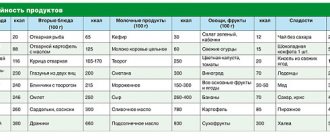People who are losing weight are usually interested in how many calories are spent when walking, since walking itself is usually undertaken with the aim of increasing energy expenditure.
From the point of view of common sense, such an activity should seem ineffective, but for people with extreme degrees of obesity, this type of physical activity may be the only acceptable one.
Calorie expenditure when walking
Walking will allow people who are unable to run due to health reasons to expend a certain amount of calories in excess of normal household and production costs. At the same time, walking can be combined with the road to work, the store, etc. You should not count on walking as an indispensable attribute of losing weight and, moreover, as a guarantee of indispensable weight loss.
Walking, as a means of losing weight, should be considered only in conjunction with a diet , while all types of energy expenditure (basal metabolism, industrial, household activity and walking) should ensure that the calories consumed exceed those received from food.
At the same time, in order to achieve stable and long-term weight loss, this excess, or imbalance (sometimes called a calorie deficit), should not exceed 400 kcal for women and 500 kcal for men (due to higher muscle mass).
Then any change in physical activity (including additional walking) should entail a corresponding increase in food consumption. This circumstance is usually perceived with distrust and even rejected, but these are the laws of physiology that cannot be argued with. Too much imbalance soon leads to a decrease in metabolic rate with a subsequent decrease in the rate of weight loss. As a result, there will be a lot of movement, little food, and no plumb lines.
However, walking will not be “superfluous” - more food will ensure the supply of sufficient nutrients, vitamins, macro- and microelements, dietary fiber, the enzyme system will work perfectly, and you will be guaranteed excellent digestion.
Count your steps! Today's best deals on pedometers:
How many steps should you take per day?
The World Health Organization (WHO) recommends that the average healthy person take 8,000 to 10,000 steps per day. This indicator appeared in the 60s. last century in Japan, after active advertising by a pedometer manufacturer, the creators of the electronic device presented 10,000 steps as a daily norm. Although the 10,000 number has not been backed up by any research, many walkers around the world have begun to aim for this number when walking.
Subsequently, noting positive results in people taking 10,000 steps per day for a long time, WHO reflected this parameter in its recommendations. Skeptical experts believe that such a norm was correct for the middle of the last century, when people ate more restrainedly, and in the process of life they moved much more than today, so the modern value of the norm is proposed to be doubled.
Other critics believe that walking is not as important as physical activity itself, which can be achieved in any way, for example, in the gym, swimming pool or even at home. But proponents of walking believe that this method has many benefits, combining benefits with the opportunity to spend quality time outdoors. Whether you take 10,000 or 8,000 steps, or even 5,000, it’s better than nothing, every thousand makes an undoubted contribution to health benefits.
Norm of steps per day for men
10,000 steps per day is an average recommended value, which is not universal. In addition to differences when taking into account age, weight and health status, this indicator differs for men and women. So, healthy adult men under 50 years of age should walk at least 12,000 Sh per day; after 50 years, this number can be reduced by 2,000, and then be guided by individually selected values.
Norm of steps per day for women
The recommended number of steps per day for women differs slightly from similar values for men:
- for women aged 18-40 years – 12,000 Sh;
- 40-50 years -11000;
- 50-60 years – 10000;
- after 60 years – 8000.
At an older age, the concept of the norm is significantly adjusted taking into account individual characteristics. Children from 7 to 10 years old can walk 15,000 steps a day (or more), regardless of gender.
Do not forget that in the process of life we make many more movements than a pedometer allows us to take into account. If a person at work is engaged in physical labor or often moves on his feet, then daily walking can be reduced to 7,000 or 6,000 steps. The number of steps must also be adjusted when visiting the gym, swimming pool or exercising at home.
Burning calories by walking: how does it work?
Let's look at what actually leads to energy consumption when walking. When a person lies motionless (but is awake), and yesterday’s food has already been digested, energy is spent only on vital processes (the work of the heart, liver, kidneys, muscles and other organs), and the consumption is close to the basal metabolic rate (BMR), about 1 kcal/kg/h (this means that for every kilogram of body weight per hour, energy consumption is 1 kcal). At the same time, the pulse rate and breathing rate are minimal. When a person gets up, energy consumption increases and will exceed the BVR by 40% - additional energy is spent on pumping blood upward, keeping the body in balance, etc. This is accompanied by an increase in heart rate by about 15 beats per minute, frequency and depth of breathing to ensure increased air oxygen requirements.
Details about losing weight by walking - the most interesting facts.
And now attention - the person brings one leg forward and transfers his body weight to it (takes the first step). The height of the center of gravity (CG) of a person (located at the level of the II sacral vertebra) decreases. Anyone who has not forgotten school geometry remembers that the height of an isosceles triangle is always less than the length of two equal thighs. In our case, the length of the base of the triangle is the length of the step, and the length of the thigh is the length of the leg. (As an extreme case, imagine a person sitting in the splits - here the CG is the lowest).
As a first approximation, lowering the CG does not require energy consumption. But when a person pulls up his second leg, at this moment the height of the CG increases, which requires work to be done against the gravity of the Earth, and for this one has to pay - with energy, i.e. calories. With a constant step length, the CG makes a down/up movement for each walking cycle; when moving down, the accumulated energy is spent uselessly; when moving up, energy must be expended from the body’s reserves.
Do you want to know how many calories are burned during squats? Read here!
You can walk at different speeds - from a walking pace of 3.5-4 km/h to fast walking at a speed of 7-7.5 km/h, while the average speed of a pedestrian is considered to be 5-5.5 km/h. As walking speed increases, step frequency increases and, accordingly, energy consumption per minute or hour increases. But what’s interesting is that the energy consumption per kilometer of travel remains virtually unchanged . This is not a paradox - this follows from the reasons for energy consumption when walking discussed above.
This ratio is violated only with very fast walking, but very fast walking (at a speed above 7-7.5 km/h) is irrational - running at such a speed turns out to be more economical than walking per kilometer of distance. (And cycling is even more economical - there is no cyclic increase in CG, you only have to overcome friction and air resistance).
How many calories are burned when walking in the heat. Heat and calories
It's hot. Does ambient temperature affect calories burned? Many smartphone programs for runners calculate calories burned based on the runner's weight, gender, speed and distance (time). But when you run at +10 with a light rain, you fly home like a light-footed deer to somehow warm up, the program tells you that a lot of clories have been spent and now you can eat two cream pies, if not three. Although you weren't even out of breath. And when it’s +34 degrees in the shade, you courageously rearrange your lower limbs, a trickle of sweat trails behind you, you feel like a hero, worthy of a bigger medal, and the program tells you that you could just as well have been lying on the couch all this time, since only snails or turtles move at such a speed. You feel cheated, you know. In general, do you burn more calories when it's hot or not? (a useless question, since I will still consume cakes regardless of the calories burned) And so as not to get up twice, the question is indirectly related to the first. How could the ancient Greeks and Romans not be bothered to constantly fight with someone if they had +40 in the shade from May to September? How did they manage to be motivated to put on armor, take weapons and shields, and all this, when normal people can only lie on their bellies in the shade and drink ice water? It’s understandable when the Scandinavians couldn’t sit straight on their butts and were always on expeditions somewhere. It's cold here and you can freeze. But residents of hot countries, why should they?
Calculate calorie consumption when walking
It is usually customary to determine how many calories are burned per hour of walking using tables. Based on the above, there is no special need for tables - it is enough to know your weight and the distance traveled. Moreover, the tables will mislead you regarding the number of calories you are interested in expended. The fact is that in the tables, energy expenditures are given based on the results of instrumental measurements of the energy expenditure of people of different weights at different walking speeds, i.e. These values include basal metabolic rate. Having walked 5 km in an hour, a person weighing 60 kg will spend about 210 kcal, while 60 kcal will be the main metabolism, and the consumption for walking itself will be 210 - 60 = 150 (kcal). Having “counted” 210 kcal as a reward for walking, he will count the hourly exchange of 60 kcal twice - once as part of the daily exchange of 60 x 24 = 1440 kcal, and the second time for an hour of walking.
Tables of energy consumption for different types of activities were compiled for a completely different purpose than helping people lose weight.
And now the numbers for calculation are very simple. For each kilometer of distance, a person spends an amount of energy in kilocalories when walking that is numerically equal to half of his weight in kilograms. In this case, the weight should not be the one that you measure in the morning on an empty stomach and without clothes, but the real weight while walking, in clothes, shoes and with additional load, if you decide to make walking heavier or this happens (for example, you need to carry a backpack). So, the formula for calculating calories burned while walking is:
0.5 x person's weight (kg) x distance (km) = Kcal burned
Example: A person weighing 80 kg, walking 1.5 km every morning to his place of work, spends 0.5 x 80 x 1.5 = 60 (kcal) energy.
When walking uphill, energy consumption increases at the rate of 0.09 kcal/kg/km for each percentage of the steepness of the climb (these percentages you saw on road signs before the climb or slope).
Example: A person climbs a 12% climb. When calculating calories burned, instead of the coefficient of 0.5 kcal/kg/km, you should use the coefficient (0.5 + 0.09 x 12) = 1.58 (kcal/kg/km).
The level of basal metabolism mainly depends on the temperature and humidity of the air, which we do not include in the calories consumed when walking. Of course, these factors influence the comfort of walking.
Benefits and Benefits
So, what are the benefits of 10,000 steps a day? The question is incorrect, of course, because it makes sense to talk about the benefits of any number of steps and activity, and not just 10,000.
Due to incorrect research and populist slogans, people sometimes think that it is after 10,000 steps that some mysterious healing and weight loss process begins, but this is absolutely not the case.
For good health
In order to describe all the benefits that physical activity brings us, you need to write 3 huge articles. Movement is literally life, and not an exaggeration for the sake of a catchphrase! What does it give us:
- Energy and good mood . Probably everyone already knows that when playing sports, joy hormones are released in the body - endorphins and endocannabinoids. Plus, fresh air, wind, and sun in themselves improve your well-being.
- No equipment or learning complex techniques required . Everyone can walk. For this you do not need any special equipment, equipment or even sportswear and shoes - you can walk in ordinary ones.
- Walking is much easier than running or, for example, working out in the gym. The loads are moderate, so the musculoskeletal system will not suffer, and the risks of fatigue or injury are minimal. There are no contraindications: absolutely anyone can walk, regardless of gender, age and health.
In addition, it’s easier for your willpower: plug in headphones with your favorite audiobook or music, dress comfortably and go for a leisurely walk, you don’t even need to force yourself.
- Bonus for losing weight : when you leave the house, the refrigerator disappears from your reach











